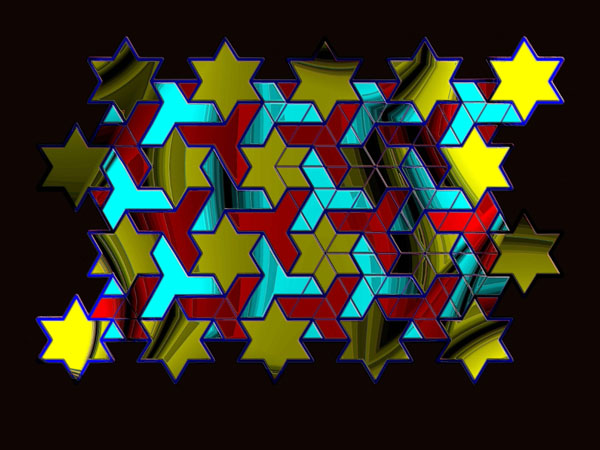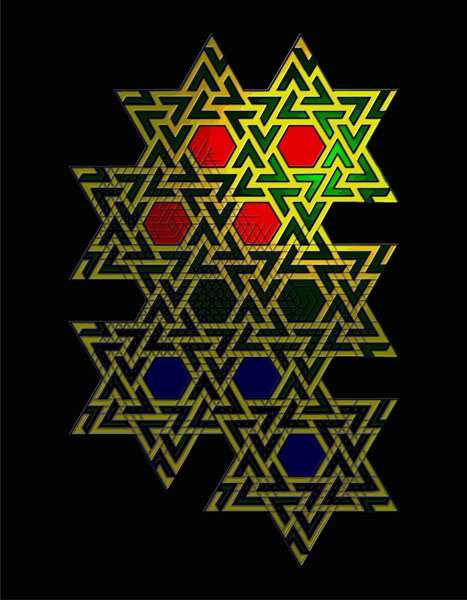Reza Sarhangi |
"Wave"
Digital print, 12” X 16”, 2008.

Wave (December 2008): An artwork based on the “Modularity” concept using triangles and rhombuses as its motifs in three colors. In this figure, except for the corners, the two compound triangles (modules) are in opposite colors. Using these two modules in a rotational fashion, results in the pattern in this artwork. |
"Together"
Digital print, 12” X 16”, 2008.

Together (November 2008): An artwork based on the “Modularity” concept using triangles and rhombuses as its motifs in three colors; however, the number of necessary colors is two. The artwork was created based on only one compound module as is presented in this figure. |
"Metaphor"
Digital print, 12” X 16”, 2008.

| Metaphor (December 2008): An artwork made from two different patterns. We note that the two top images in this figure present the relationships between a cross and an octagram. The blank space between four octagrams is a cross, and the four crosses make an octagram. So in some sense, we may say that the cross and the octagram are each others' duals. An interesting observation about the butterfly shaped element in the tiling construction presented in the two bottom images in this figure is that the space between each four of them could be either a cross or octagram, depending on their arrangements. |
Reza Sarhangi, Professor of Mathematics,
The Department of Mathematics, Towson University
Towson, Maryland
"I am interested in Persian geometric art and its historical methods of
construction, which I explore using the computer software Geometer's
Sketchpad. I then create digital artworks from these geometric
constructions primarily using the computer software PaintShopPro."